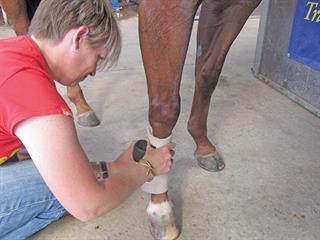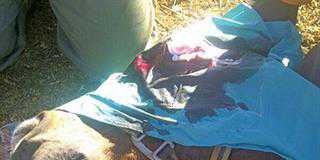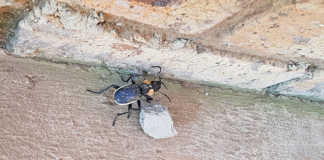
A horse needs four functional legs. Yet these limbs, made up of nerves, tendons and bones covered by a thin layer of delicate skin, are remarkably fragile. A passing blow from an iron-shod hoof can disable a horse for life. For this reason, horses ridden at competition level should always wear protective bandages when lunged or worked, or when participating in active sports such as jumping, polo and reining.
Because the bandages are expected to stand up to rapid and complicated movements of the limbs, they have to be put on correctly, otherwise tendons can be injured or circulation can suffer. A bandage that comes loose during galloping or jumping can also result in a severe fall.
These limitations have led some experts to argue that exercise bandages per se is unwise. But perhaps the best argument for using them is that a large number of competitive riders do. The bandages used for travelling horses or supporting tired legs to prevent swelling – so-called stable bandages – are applied differently to those used for exercise.
Bandages for keeping dressings in place are also in a different category, as injured horses are not expected to move at speed, so they have much more padding. Probably the most important component of an exercise bandage is the padding. In days gone by, this consisted of felt with a white cotton covering. Later, cotton wool was used as padding.
It was wound thickly and evenly around the leg from just below the knee (or hock) to the level of the fetlock. Some riders now use thick sponge as padding. Be careful, though – this can become slippery with sweat and prevent the skin from ‘breathing’. If used repeatedly it can even result in skin infections.
The polo wrap
The bandage on top of the padding is traditionally known as a ‘polo’ or ‘leg’ wrap, and is a long, soft, slightly stretchy bandage. It usually has ties at one end and must be rolled up so that the ties are on the inside and at the correct place when the bandage has been applied. More modern leg wraps have Velcro ends, which are easier to fasten, but they should be overlaid with Elastoplast if the horse is involved in an active sport, as they can come loose.
In the past 10 years or so, a self-adhesive elastic bandage called Vetwrap has come into vogue. Although this is excellent for securing wound dressings and can be used to keep a polo wrap in place, it is waterproof and does not allow the skin to breathe. Beware too of wrapping it on too tightly; this is easy to do as the material is very stretchy. Unwrap it completely and apply it without pulling it tight.
Putting on an exercise bandage
The classic way to apply an exercise bandage is to put on a gamgee or padding so that it just overlaps on the outside of the leg, with the overlap facing backwards. Place the end of the bandage vertically at the level of the knee, so that it can be folded down over the first layer of bandage and then secured as you bring the bandage around a second time.
These two layers are placed below the knee (or hock on the hind leg), with about 1cm of padding visible above the layers.
After the first two rounds, wind the bandage systematically down the leg at a slight angle, with each layer overlapping the previous one by about 2cm. When you reach the end of the padding, wind the bandage straight around the leg about 1cm above the end of the padding and then up the leg in the opposite direction. Secure it using the ties or Velcro.
When the bandage is in place, you should be able to insert two fingers under it by compressing the padding. If you are a bit confused by these instructions, watch www.youtube.com/watch?v=FirJrmp0GBw. However, putting on an exercise bandage is a skill best learned from an expert who supervises while you practise.













